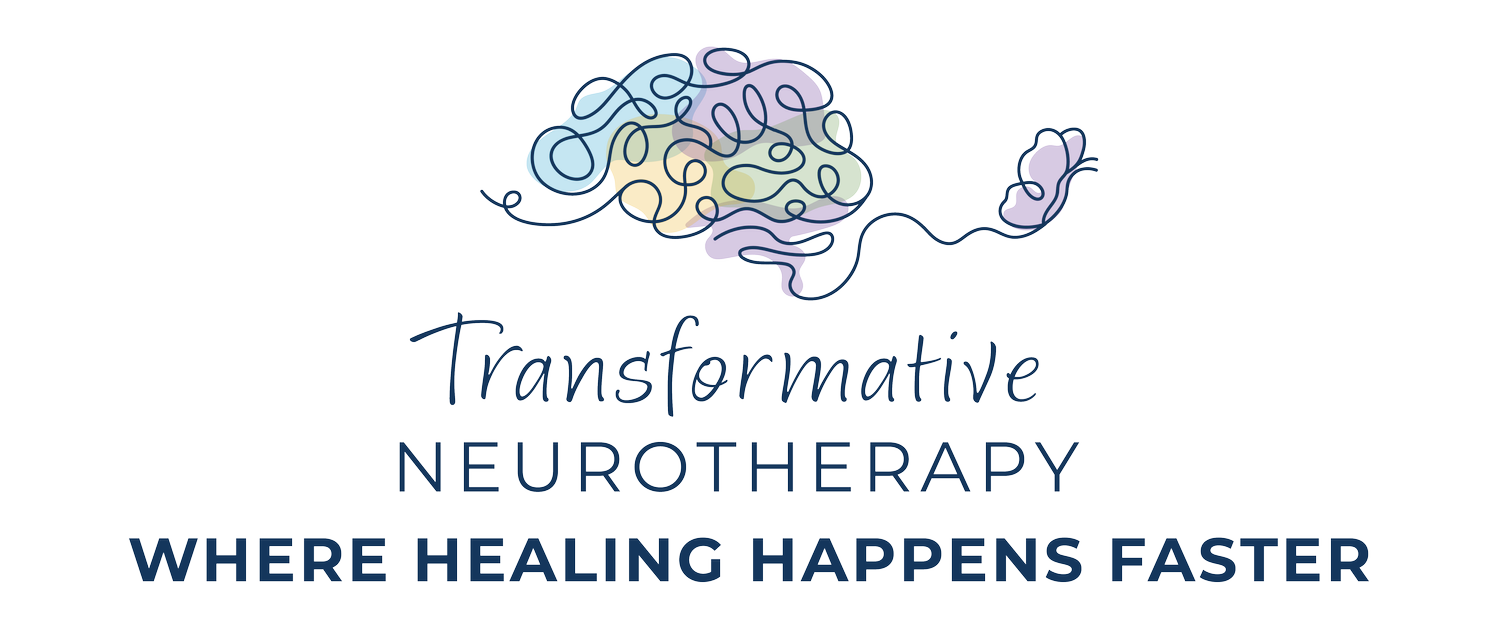SAFE NEUROTHERAPY FOR EVERY BRAIN (Podcast Episode 6)
by Heather Putney, PHD, LMFT, CSAT-S, QEEG-DL
EXECUTIVE DIRECTOR, FOUNDER
Untethered Therapy and Transformative Neurotherapy
Safety sits at the center of every brain-based therapy I use—and for good reason. No one wants to trade risk for results. My goal is to help patients feel confident that neuromodulation can be both gentle and effective when guided by science, dosing limits, and careful protocols. I work with three primary approaches: photobiomodulation (light therapy), pulsed electromagnetic field (PEMF), and low-intensity electrical stimulation. Each interacts with the nervous system in a unique way, but the throughline is precision. Targeted wavelengths, tuned magnetic frequencies, and controlled current keep interventions within a safety envelope supported by research.
Whether you’re managing brain fog, anxiety, post-COVID fatigue, or simply curious about peak performance, the key is understanding both mechanism and dose. That’s where I start—with education, calibration, and a commitment to listening to the body’s feedback.
Light Therapy (Photobiomodulation)
Light therapy, also called photobiomodulation, uses specific wavelengths and intensities shown to support mitochondrial function, cerebral blood flow, and neuroplasticity. When applied to targeted regions, it can help with cognitive decline, mood disorders, and post-viral brain fog. The most common side effect is warmth on the skin, which is expected and easily managed by adjusting intensity or placement. Because it’s noninvasive and well studied, many people feel comfortable starting here. I tailor frequency and pulsing to match individual goals—alerting when needed or soothing for evening sessions. For those concerned about overstimulation, I begin with low settings and observe response patterns between visits to fine-tune exposure.
PEMF (Pulsed Electromagnetic Field)
PEMF builds on the idea that electromagnetic fields can be either disruptive or restorative depending on frequency, waveform, and amplitude. Using low-intensity coils, I deliver frequencies designed to resonate with the body. One of my favorite protocols targets systemic inflammation, often placing coils at the gut to influence the gut–brain axis. Reducing peripheral inflammation can calm neuroinflammation and improve focus and emotional regulation. The origin story of PEMF is compelling: a developer seeking a safe way to stimulate a newborn’s brain after hypoxia needed a modality gentle enough for a fragile nervous system. That constraint shaped PEMF into a therapy that is subtle, quiet, and often unfelt, yet supportive of oxygenation and circulation. Clinical use has expanded, but the safety-first roots remain.
Electrical Stimulation (tCDS / tACS)
Electrical stimulation is the modality people question most, yet it’s also the most controlled. Compared with consumer TENS units that may run from 0 to 80–100 mA on the body, transcranial direct current stimulation (tDCS) in clinics operates at much lower levels. A meta-analysis of 158 studies, totaling more than 4,000 participants, reported no serious adverse effects within parameters: up to 4 mA and 40 minutes per session. Typical side effects were mild skin redness or irritation at electrode sites. My practice is even more conservative. I titrate from 0.001 to 2.5 mA and observe responses in real time. I start low, increase gradually if tolerated, and stop at the lowest effective dose. Think of it like medication titration: begin with microdoses, earn the next step with clear benefit and comfort, and cap at safe ceilings.
Safety for Children and Vulnerable Groups
Parents often ask whether these protocols are suitable for children or other vulnerable groups. The evidence base includes women, children, older adults, and some pregnant populations, with no elevated risks reported when operating inside established limits. While fewer studies focus exclusively on these groups, my clinical experience aligns with the data: when titrated thoughtfully, children with ADHD, sensory differences, or autism can experience better focus, improved executive function, and steadier emotions. Families often report calmer evenings and better sleep, which amplifies gains during the day. For adults seeking peak performance, short alerting protocols in gamma ranges can feel like a clean cup of coffee—more clarity without jitter. Sleep quality often improves after sessions, a reliable sign that the nervous system is settling rather than being overstressed.
Safety is More Than a Checkbox
The broader takeaway is that safety isn’t a checkbox—it’s a method. I define the target, choose the modality that best fits the goal, set conservative parameters, and listen to the body’s feedback. By integrating light, PEMF, and electrical stimulation with measured dosing and individualized placement, I help the brain do what it’s built to do: adapt. Whether the aim is recovery from brain fog, relief from chronic stress, or a sharper edge at work, the safest path remains the smartest path—start low, go slow, personalize, and verify progress with sleep, mood, focus, and function.
